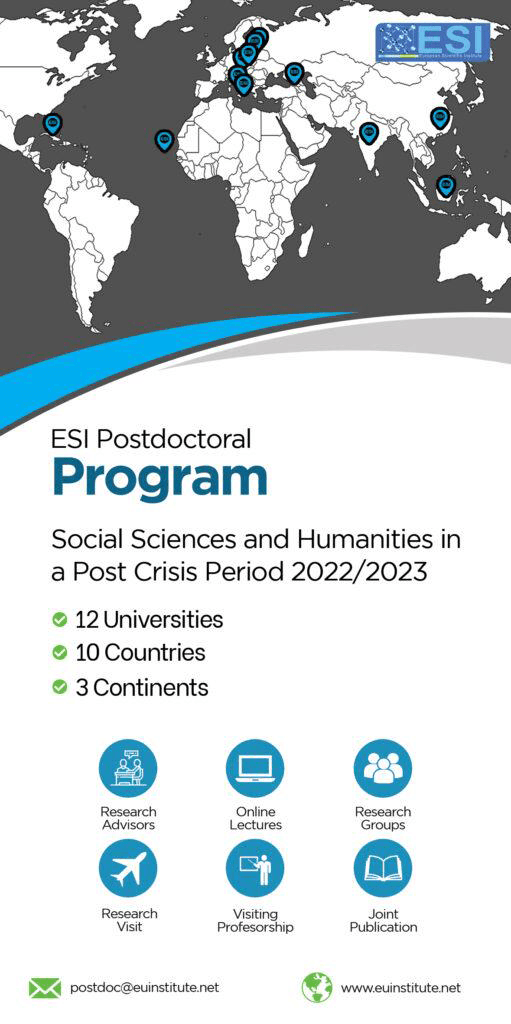The Impact of Marketing Communications on Consumer Behavior
Abstract
Marketing is a crucial function in organizations that aim to retain existing customers and attract new ones to achieve long-term, sustainable profitability. The current technological developments in communication media have made it easy for the marketing communication function to perform at its full capacity. The primary objective of marketing communication is to create consumer awareness about the products and services offered. Hence, sometimes organizations may rely solely on digital channels to raise product and service awareness and build brands. On the other hand, they may concentrate on different marketing channels, using cross-marketing, including traditional channels like TV and radio and parallel digital channels. Depending on the situation, companies use multiple communication channels to influence consumers’ buying decisions and their behavior toward brands. The Saudi telecom players have been deliberately investing in marketing activities to influence consumers across genders, nationalities, groups, and ages. They have been investing in traditional communication channels during the last decade. Their messages were distributed among all traditional channels, especially TV, outdoor, and Radio. Understanding of varying consumer behavioral patterns, such as motivation, knowledge, and information processing, will aid in designing, building, and implementing effective marketing communication strategies.
Downloads
Metrics
References
2. Agrawal, D. (1996), ‘Effect of brand loyalty on advertising and trade promotions: a game theoretic analysis with empirical evidence’, Marketing Science, 15 (1), pp. 86-108
3. Ajzen, I. (1991), ‘The theory of planned behavior’. Organizational Behavior and Human Decision Processes, 50 (2), pp.179–211.
4. Ajzen, I. & Fishbein, M (1969), ‘The prediction of behavioral intentions in a choice situation.’ Journal of Experimental Social Psychology, 5 (4), pp. 400–416.
5. Al Dosary, H., AlSoqair, F., AlFahad, N., & AlKhamis, S. (2012) ‘Marketing Principles Term Project’, Prince Mohammed Bin Fahad University, Available at: http://www.pmu.edu.sa/Attachments/BBF/New%20folder/!6d61726b6574696e675f53544320313131.docx .
6. Algesheimer, R., Dholakia, U.M. & Herrmann, A. (2005) ‘The social influence of brand community: Evidence from European car clubs.’ Journal of Marketing, 69 (4), pp.19–34.
7. Nazar, T. (2015), ‘Saudi Telecom Co. (STC): Investment Update’, Saudi Arabia, Al Jazira Capital, available at:< http://www.aljaziracapital.com.sa/report_file/company/FUN-850.pdf> [Accessed 20th December, 2017].
8. Al Jubran, J. (2016), ‘Saudi Telecom Sector: Sector Update’, Saudi Arabia, Al Jazira Capital, available at: http://www.aljaziracapital.com.sa/report_file/ess/SEC-288.pdf [Accessed 20th December, 2017].
9. Nazar, T. (2016) ‘Mobile Telecommunication Company Saudi Arabia (Zain) Coverage Initiation Report’, Saudi Arabia, Al Jazira Capital, Available at:
10. Alvarez, R.V., & Casielles, R.V. (2005) "Consumer evaluations of sales promotion: the effect on brand choice", European Journal of Marketing, 39 (1/2), pp.54-70
11. Anderson, E.W., & Sullivan, M.W. (1993), ‘The antecedents and consequences of customer satisfaction for firms’, Marketing Science, 2 (2), pp. 125-143.
12. Arab news, (2007) ‘Mobily Starts SR1b 3G Network Expansion’, Arab News, available at:< http://www.arabnews.com/node/305389 >.
13. Batra, R. & Keller, K.L. (2016) ‘Integrating Marketing Communications: New Findings, New Lessons, and New Ideas’, Journal of Marketing, 80 (6), pp. 122 – 145.
14. Batra, R. & Ray, M.L. (1986) ‘Situational Effects of Advertising Repetition: The Moderating Influence of Motivation, Ability, and Opportunity to Respond’ Journal of Consumer Research, 12 (4), pp. 432–45.
15. Bayton, A.J. (1958) ‘Motivation, Cognition, Learning: Basic Factors in Consumer Behavior’, Journal of marketing, 22 (3), pp. 282-289.
16. Belk, R. Askegaard, S. & Scott. L. 2012, Research In Consumer Behavior. [Electronic Book], n.p.
17. Blackwell, R.D., Miniard, P.W., & Engel, J.F. (2006) Consumer behavior, 10th ed. Singapore: Thomson South-Western.
18. Blair, A. (1996) ‘The possibility and actuality of visual arguments.’ Argumentation and Advocacy, 33 (1), pp. 23–39.
19. Blythe, J., (2000), ‘Corporate Communications’ an International Journal, 5 (4), pp. 235-235
20. Chang, C. (2005). ‘Ad–self-congruency effects: Self-enhancing cognitive and affective mechanisms.’ Psychology and Marketing, 22(11), pp. 887–910.
21. Chatterjee, P. (2012), ‘The role of varying information quantity in ads on immediate and enduring cross-media synergies’ Journal of Marketing Communication, 18(3), pp. 217-240.
22. Collis, J. & Hussey, R. (2013) Business Research: A Practical Guide for Undergraduate and Postgraduate Students. 4th ed. London: Palgrave-MacMillan.
23. Creswell, J.W. (2003). Research Design: Qualitative, Quantitative, and Mixed Methods Approaches. 2nd Edition. Thousand Oaks, California: Sage Publications.
24. Dastous, A., Landreville, V. (2003) ‘An experimental investigation of factors affecting consumers' perceptions of sales promotions’, European Journal of Marketing, 37 (11/12), pp.1746-1761,
25. Dehghani,M., Niaki, M. K., Ramezani, I., & Sali, R. (2016) ‘Evaluating the influence of YouTube advertising for attraction of young customers’ , Computers in Human Behavior, 59, pp. 165-172.
26. Demers, G., (2014), ‘Why Your Company Blog Shouldn't Be About Your Company’ Forbes, available at: https://www.forbes.com/sites/jaysondemers/2014/08/18/why-your-company-blog-shouldnt-be-about-your-company/#5c8bfd614639> [Accessed 20 January, 2018].
27. Dijkstra, M., Buijtels, H., and Raaij. F., (2005), ‘Separate and joint effects of medium type on consumer responses: a comparison of television, print, and the Internet’, Journal of Business Research, 58 (3), pp. 377-386.
28. Dholakis, U.M., Bagozzi, R.P. 8c Pearo, L.K. (2004) A social influence model of consumer participation in network- and small-group-based virtual communities. International Journal of Research in Marketing, 21(3), 241-263.
29. Donthu, N. & Garcia, A. (1999). ‘The Internet shopper’ Journal of Advertising Research, 39 (3), pp.52–58.
30. Duncan T.R., & Everett S.E. (1993). ‘Client perceptions of integrated marketing Communications’, Journal of Advertising Research, 33 (3), pp. 30-39
31. Duncan, T. & Moriarty, S. E., (1998). “A Communication - Based Marketing Model for Managing Relationships”, Journal of Marketing, 62 (2), pp. 1-13.
32. Fahmy, S.; Bock, M. A. Wanta,W. (2014) ‘Visual Communication Theory and Research. A Mass Communication Perspective, 1st ed. New York: Palgrave Macmillan.
33. Furse, D. H., Punj, G. N., & Stewart, D. W. (1984). ‘A typology of individual search strategies among purchasers of new automobiles’ Journal of Consumer Research, 10 (4), pp. 417–431.
34. Gao, Q., Feng, C. (2016) ‘Branding with social media: User gratifications, usage patterns, and brand message content strategies’, Computers in Human Behavior, 63, pp.868-890.
35. Garber, L., Dotson, M. (2002). ‘A method for the selection of appropriate business–to–business integrated marketing communications mixes’, Journal of Marketing Communications, 8 (1) pp. 1–17.
36. Gronstedt, A. (2000). The customer century. Lessons from world-class companies in integrated marketing and communication, New York: Routledge.
37. Hancock, D. R., & Algozzine, B. (2011). Doing Case Study Research: A Practical Guide for Beginning Researchers, 2nd ed. New York: Teachers College Press.
38. Howard J.A., Sheth J.N. (1969) The Theory of Buyer Behavior – New York: John Wiley & Sons.
39. Jacoby, J. Chestnut, W. R., & Fisher, A. W. (1978), ‘A Behavioral Process Approach to Information Acquisition in Nondurable Purchasing,’ Journal of Marketing Research, 15(4), 532-544.
40. Jovanovic, P., Vlastelica, T., Kostic, C. S. (2016), ‘Impact of Advertising Appeals on Purchase Intention’ Journal for theory and practice of management, 81, p35-45, DOI: 10.7595/management.fon.2016.0025.
41. Kang, J., Tang, L., & Fiore, A.M. (2014) ‘Enhancing consumer–brand relationships on restaurant Facebook fan pages: Maximizing consumer benefits and increasing active participation’ International Journal of Hospitality Management, 36, pp. 145–155.
42. Keller, K. L. (2009).’Building strong brands in a modern marketing communications Environment’ , Journal of Marketing Communications, 15 (2/3), pp. 139–155.
43. Keller, K. L. (2016), ‘Unlocking the Power of Integrated Marketing Communications: How Integrated is Your IMC Program?’, Journal of Advertising, 45(3), pp. 286–301.
44. Kozinets, R. (2010) Netnography. Doing Ethnographic Research Online, Los Angeles: Sage Publications.
45. Kwon, E. S., Kim, E. Sung, Y. Yoo, C. Y. (2014) ‘Brand followers Consumer motivation and attitude towards brand communications on twitter’, International Journal of Advertising, 33 (4), pp. 657-680.
46. MacInnis, D., and Jaworski. J. B. (1989), ‘Information Processing from Advertisements: Toward an Integrative Framework’ Journal of Marketing, 53 (4), pp. 1–23.
47. Maslow, A. H. (1954) Motivation and Personality, New York: Harper.
48. McArthur, D. N. & Griffin, T. (1997). ‘A marketing management view of integrated marketing communications’, Journal of Advertising Research, 37 (5), pp. 19-26.
49. Oancea O., (2015), ‘The Model of Integrated Marketing Communication: Who has the Role to Influence Consumer Behavior?’: Acta University Danbius, 11 (1), pp. 22 - 31.
50. Mobily, (2017), وش ممكن تسوي بـ 300 جيجا؟, Mobily, [Online Video], Available at:
51. Mobily, (2017) , #الاستراحة_شو 2: وش مسوي خالد! Mobily, [Online Video], Available at: < https://www.youtube.com/watch?v=gIrFJQPBlMU> [Accessed 15th January, 2018].
52. Mulhern, F. (2009), ‘Integrated Marketing Communications: From Media Channels to Digital Connectivity’ Journal of Marketing Communications, 15 (2-3), pp. 85-101.
53. Naik, P.A. and Raman, K. (2003), ‘Understanding the impact of synergy in multimedia communications’, Journal of Marketing Research, 40 (4), pp. 375-388.
54. Newman, J. W. & Staelin, R. (1972). ‘Pre-purchase information seeking for new cars and major household appliances’, Journal of Marketing Research, 9 (3), pp. 249-257.
55. Nicosia, & Franco. M., (1982) ‘Consumer Decision Processes. A Futuristic View’ Advances in Consumer Research, 9 (1), pp. 17 – 19.
56. Preston, S.D., Knutson, B., & Kringelbach, M.L. (2014) Interdisciplinary Science of Consumption, MIT Press, Cambridge. Available from: ProQuest Ebook Central. [5 March 2018].
57. Ratneshwar, S., Mick, D., & Huffman, C. 2003, The Why Of Consumption. [Electronic Book] : Contemporary Perspectives On Consumer Motives, Goals, And Desires, n.p.: University of Liverpool Catalogue, EBSCOhost, [Accessed 10 December 2017]
58. Binzaarah A., (2015). Saudi Telecom Company, Saudi Arabia, RiyadhBank [pdf] Available at: http://www.riyadcapital.com/en/Images/STC_12-16-2015_EN_tcm10-6706.PDF [Accessed 20 Dec 2017].
59. Ryan, R. M., & Deci, E. L. (2000) ‘Self-determination theory and the facilitation of intrinsic motivation, social development, and well-being’ American Psychologist, 55(1), 68-78.
60. Rubinson, J. (2009), ‘Empirical Evidence of TV Advertising Effectiveness’, Journal of Advertising Research, 49 (2), pp. 220-226.
61. Russmann U, Svensson J. (2016) ‘Studying Organizations on Instagram’ Information Science and Technology, 7 (4), pp. 1 – 12.
62. Schiffman, L.G., & Kanuk L.L., (1997). Consumer Behavior. 6th ed., London:Prentice Hall International.
63. Schultz, D.E., Tannenbaum, S.I. & Lauterborn, R.F. (1993). Integrated Marketing Communications, McGraw Hill Professional.
64. Schwarz, N., Bless, H., & Bohner, G. (1991) ‘Mood and persuasion: Affective states influence the processing of persuasive communications.’ Advances in Experimental Social Psychology, 24, pp. 161–199
65. Sheehan, K. B. and Morrison, D. K. (2009), ‘The Creativity Challenge: Media Confluence and Its Effects on the Evolving Advertising Industry’ Journal of Interactive Advertising, 9 (2), pp. 40-43.
66. Singh, S. K. (2015) ‘Is Middle East Print Media Dead?’, Gulf Marketing Review, available at: https://gulfmarketingreview.com/media/middle-easts-print-media-dead
67. Solomon, M, Bamossy, G, Askegaard, S, & Hogg, M (3026)., Consumer Behavior, A European Perspective, n.p.: New York : Pearson, 2016.
68. STC, R. 2018, STC – History of a game – Tikken, Video Recording, YouTube, Viewed 15 January, 2018 < https://www.youtube.com/watch?v=yzEGkj-ZsEg>.
69. Strauss, A. and Corbin, J. (1998). Basics of Qualitative Research: Techniques and Procedures for Developing Grounded Theory. Thousand Oaks, California: Sage Publications.
70. Tavakoli, M., & Cave, M. (1996) ‘Modelling television viewing patterns’, Journal of Advertising, 25 (4), pp. 71-86.
71. Tellis, W. M. (1997). ‘Application of a Case Study Methodology’, The Qualitative Report, 3(3), 1-19. Retrieved from http://nsuworks.nova.edu/tqr/vol3/iss3/1
72. Webster, J., Trevino, L.K. and Ryan, L. (1994), ‘The dimensionality and correlates of flow in human computer interactions’, Computers in Human Behavior, 9 (4), pp. 411-426.
73. Wendel, S., & Dellaert, B. (2005) ‘Situation Variation in Consumers’ Media Channel Consideration’ Journal of the Academy of Marketing Science, 33 (4), pp. 575 – 584.
74. White, B. (2000). Dissertation Skills for Business and Management Students. Canada: Thomson Learning.
75. Williams, K. & Spiro, R. ‘Communication style in the Salesperson’ Journal of Marketing Research, 22 (4), pp. 434-442.
Copyright (c) 2025 Mahmoud Manasra

This work is licensed under a Creative Commons Attribution 4.0 International License.








